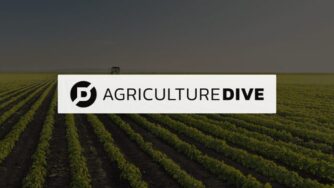The Counter published a deep dive into how regenerative agriculture is being discussed today and what the future definition will be. The report featured CIBO CEO Dan Ryan weighing in on the scientific debate about how much carbon agricultural lands can actually sequester in the soil.
There is still widespread scientific debate about how much carbon agricultural lands can actually sequester in the soil. The potential carbon benefit can vary from region to region, farm to farm, even from parcel to parcel within a single farm. It can change based on soil composition. It can change based on the level of nitrogen available. Some studies suggest that agricultural lands max out their carbon sequestration potential over time. And even minimal tillage has the potential to undo all a farmer’s short-term carbon.
“Modeling based on practices isn’t necessarily a crude tool. Dan Ryan is CEO of CIBO, a software platform that hopes to make it possible to verify regenerative practices at scale without on-the-ground testing. He told me that his platform has already determined what he calls “the regenerative potential” for every parcel of land in the U.S.—how much carbon could be stored under ideal circumstances, given the variety of factors present. From there, the platform uses satellite imaging to verify which practices are being used, while adding a layer of computer modeling that helps to calculate the overall benefit of these practices using data from the Intergovernmental Panel on Climate Change and other sources. Though the models are validated against generic on-the-ground data over the years, direct measurements are not taken on a field-by-field basis—and Ryan thinks that’s just fine.”
“It’s not 100 percent accurate, and no one’s going to say that,” he said. “But on average, over time and space, it’s going to be correct.”
Learn more about the regenerative agriculture debate in The Counter.



